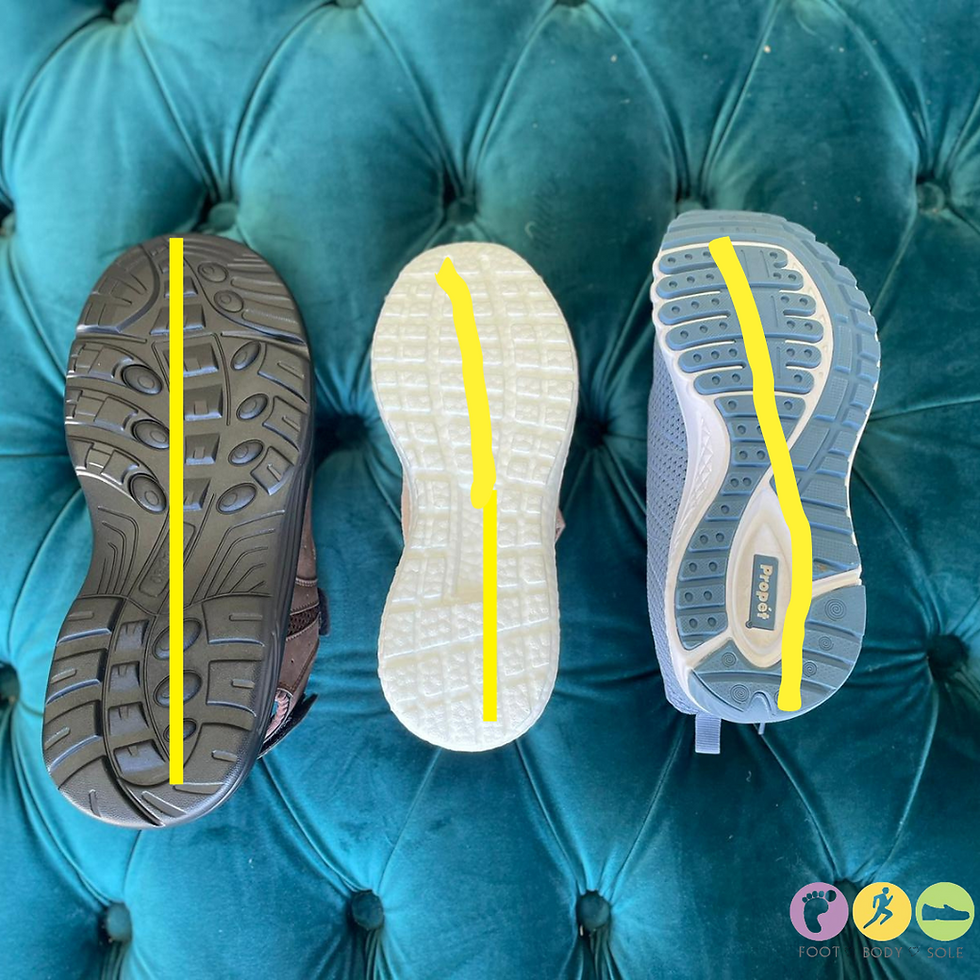Ingrown toenails - what to do and what not to do
- Foot Body Sole
- Sep 9, 2021
- 3 min read

Ingrown toenails can be a very underrated, painful condition throughout the general community and are often considered to be the "bread and butter" of Podiatrists.
The term "ingrown toenails" usually refers to where the nail has caused pain in the skin, either underneath or on the side.
Ingrown toenails can be caused through various factors including incorrect cutting technique, the nail being too wide for the toe, trauma to the toe, fungal infection, thickening of the nails or very "involuted," (deep set) nail sides.
It is important to treat ingrown toenails because persistent pain can lead to infections, worsening of the condition and reduction of work, school and/or activity.

HOW TO AVOID INGROWN TOENAILS
Cut your nails with the contour of your nail/toe and do not "dig in" at the sides
Opt to file the "corners" and edges of the nail after cutting to avoid creating a nail spike with clippers
Wear shoes which are flexible in the toes and wide enough so the sides of the shoe are not pressing the toes together
Purchase the correct sized socks, yes, even tight socks can cause pain with an ingrown toenail
Wear new shoes in slowly, they may be tight around the toes
Avoid walking in shoes without the toes covered. Ingrown nails/pain can be caused by single or repeated trauma causing changes in the nail or pressure to the skin.
Ensure your feet are kept clean, and free of tinea/fungus. Fungus in the nail (Onychomycosis) can occasionally thicken the nails which can cause shape changes and extra pressure on the surrounding skin, resulting in pain
If pain occurs, consider what may have caused it (cutting/shoes/walking/trauma), and apply an antiseptic/salt bath if there is any open skin.
Seek Podiatrist care to ensure your nails and skin are maintained correctly and safely to reduce the chances of ingrown nails occurring.
Do not leave your toe too long before seeking help.

There are multiple treatment and management options for Ingrown Toenails which can be tailored to the individual's specific nail, toe and person's activity levels.
HOW A PODIATRIST CAN HELP WITH INGROWN NAILS
General skin and nail care to ensure that nails stay smooth, thin and pain- free
Check for, educate and potentially treat risk factors associated with ingrown toenails- (genetics, shoes, activity, nail shape, toe shape, fungal infection, trauma)
Provide care for the nail causing pain- removal of callous, clipping/cutting of the nail to remove the offending edge and application of antiseptic
Application of offloading techniques- including taping, padding and toe separators/protectors
Packing under the nail to assist lifting
Discussion about prognosis of the nail, and management strategies applicable to the individual

Undertaking of a Partial Nail Avulsion (PNA) to permanently remove the section of nail. More information on this topic can be accessed on one of our previous blogs: https://www.footbodysole.com.au/post/is-ingrown-toenail-surgery-as-scary-as-it-sounds Some photos are available on our website: https://www.footbodysole.com.au/nail-surgery
Provide moral support- most Podiatrists have experienced painful ingrown nails before and we can be a shoulder to cry on- some of us have even had surgery before too!
Podiatrists can assess for inflammation and infection, and discuss whether antibiotics from a doctor are warranted.
REMEMBER: Ingrown toenail infections are common, and can become dangerous if left untreated. Antibiotics do not fix the cause of the ingrown nail, rather they clear infection. Interestingly, the infection is likely to reoccur if the toenail is not physically treated and the cause of the pain not removed.

Podiatrists have multiple ways to treat and manage ingrown nails and can tailor an individual plan based around each separate condition. No two people or nails are the same!
Lots of people come to get their chronic ingrown nails sorted in the winter months so that when summer comes around, the toes are feeling fresh.
If you have any questions about your ingrown toenails or for other family members that also have pain, feel free to contact us at the clinic on 1800 778 316.









Comments